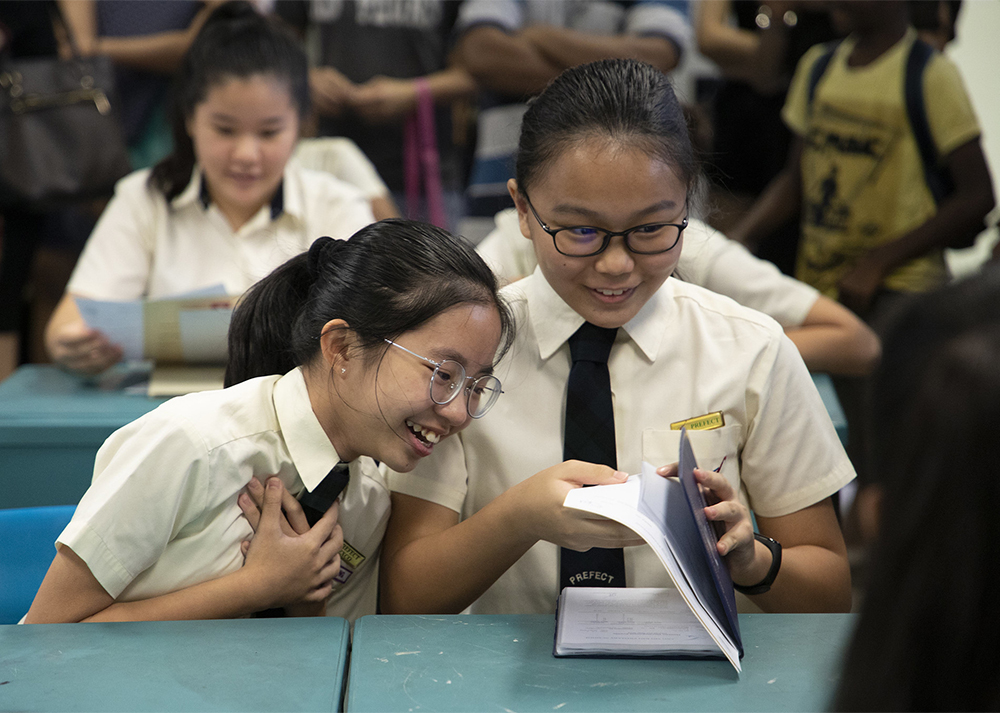Last year, China announced a proposed law restricting children’s access to the Internet on mobile devices.
Phone makers would be required to develop a ‘minor mode’ to set usage limits, which parents can toggle on or off. Using this mode, devices and applications would limit usage to two hours for children under 18, one hour for those under 16, and 40 minutes for those under eight.
Children will also be banned from accessing the Internet on mobile devices from 10pm to 6am.
These terms may horrify some parents, but I think it is a good move.
Let me assure you that I am not a Luddite as I have worked in the technology industry for over 15 years. I have also been a gamer for over 30 years and I managed the Xbox 360 console business in Singapore a decade ago.
My enthusiasm for technology has also made me more acutely aware of the disturbing numbers on how technology has impacted society.
Everyone is glued to their screens
According to data science platform data.ai’s report 2024 State Of Mobile, consumers around the world spend an average of five hours a day on mobile apps.
The average number of hours has been rising steadily over the years, despite the growing body of research stating that adults and children should spend less time on their phones. Excessive smartphone usage is increasingly linked to impairment of cognitive functions and increase in mental health issues.
Even Unesco, the United Nations’ education, science and culture agency, has declared that mobile devices can cause distraction, risk pupil privacy and lead to cyberbullying. Unesco has warned of the risks of smartphones in schools, stating that “only technology that supports learning” is merited in schools, according to a BBC report in 2023.
Social psychologist and professor Jonathan Haidt published a book The Anxious Generation this year which studies “the epidemic of teen mental illness that hit many countries at the same time”. He writes that the “phone-based childhood” that began in the early 2010s led to the rise in rates of depression, anxiety, self-harm and suicide. He recommends that schools should disallow the use of smartphones, that students should not use social media until they are 16, and that children should not have a phone until they are in high school (secondary school).
In Singapore, nearly half of youth between the ages of 15 and 21 have “problematic smartphone use” that suggests a link to poorer mental health, according to research from the Institute of Mental Health.
The researchers who conducted the study defined “problematic smartphone use” in terms of dependence and time spent on such devices, as well as the problems caused. The problems ranged from physical discomfort – pain in the wrists or neck from prolonged smartphone smartphones – to having difficulty concentrating during lessons.
Despite all these warnings, many people do not seem to care about the dangers.
How I did things differently in the early years
I feel upset when I see parents using mobile devices as a nanny device to keep their young toddlers occupied. How often have you seen young kids at restaurants and food courts with a phone or tablet plonked right in front of their faces while their parents stare at their own phones?
Now, I will admit that when my children were toddlers, it was a relief to let them watch television so my wife and I could get some rest.
But with televisions, the screen is a distance away and they are not interactive.
On the other hand, smartphones must be used up close and apps are designed to deliver dopamine hits, fuelling addictive behaviour such as doomscrolling in social media apps or inciting people to keep playing games.
To make things worse, there are numerous scammers and dubious characters prowling online chat rooms and interactive platforms.
As my children grew up in the 2000s and 2010s, my wife and I decided we would restrict our children’s phone usage.
When my kids were in primary school, we got them basic “dumbphones”. This meant that they could not go online as the phones were so primitive (they had a small screen, a number pad and could not surf the web). The phones were really just for contacting us.
As they went into upper primary school, there was a need for the kids to join the class WhatsApp groups. We let them join through my phone or my wife’s phone, so we could also monitor what was going on in the chats.
In secondary school, our kids’ “dumbphones” were upgraded to smartphones but we kept them on prepaid SIM cards without data plans so they could not freely access online apps when they were taking public transport.
In the home, they have Wi-Fi access, so I designed a way to minimise their screen time. I declared that everyone had to charge and use their phone at the same spot in our living room, and that nobody — including me — could use it anywhere else in the house.
This meant that my children, my wife and I would never use our phones at the dinner table, on the living room couch or inside our bedrooms. This habit was inculcated in my children as they started secondary school.
Leading by example in their post-secondary years
Of course, these restrictions could not last forever. Once the kids completed secondary school and went on to higher learning, I no longer curbed their usage.
What I did then was to lead by example as a parent.
In 2018, when Facebook was still popular, I removed the app from my phone. That led to an immediate reduction in my smartphone usage. Previously, I was addicted to scrolling that social media platform. Without the app, I also took much fewer photos as there was no need to share my daily happenings with others.
When my teenage daughter became addicted to Instagram, I explained to her that social media has a peculiar effect on all of us.
I told her that social media apps thrive on us showing off our selfies or our consumption habits and I asked her to think about whether such apps can truly make her happy. She got my drift.
Since then, she has developed a habit of removing any social media app from her phone whenever it gives her FOMO (“fear of missing out”) stress.
Never too soon to start
When it comes to setting controls on our children’s screen use, my take is that the clarity of such actions should come from us parents, not from anyone else.
Take for example, the guidelines issued by the Ministry of Health in March 2023: To minimise unhealthy screen usage, the ministry recommends that children under 18 months should not have any screen time. Those aged between 18 months and 36 months should have no more than one hour a day.
It is clear that parents are the ones who have to carry out the recommendations, but how many parents know about these guidelines?
Young children cannot be expected to know how to protect themselves from the addictive nature of mobile apps, so we need to take action from the time they are babies.
Then, as they enter teenhood, we can intervene less but spend more time showing and telling why excessive smartphone usage is bad for them.
Smartphones have changed the world for the better in many ways, but the flip side is also true. We cannot ask mobile tablets to nanny our children; let’s show them the healthier way of using technology.





.jpg)
